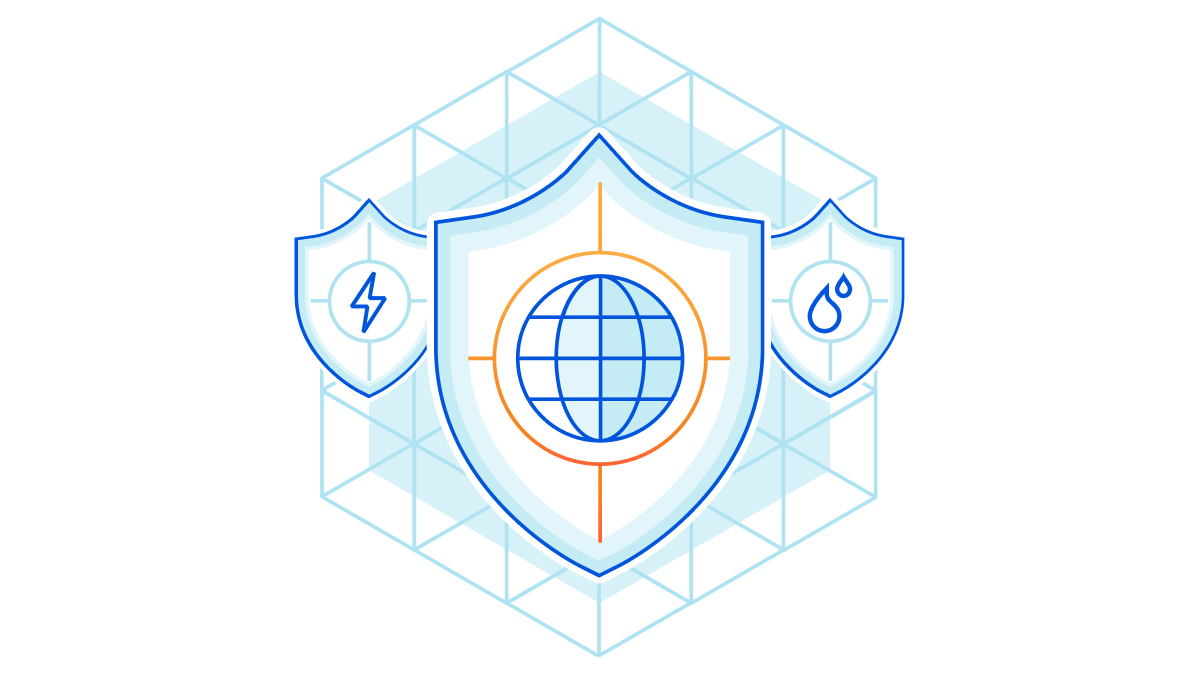Cloudflare, CrowdStrike, and Ping Identity launch the Critical Infrastructure Defense Project


Today, in partnership with CrowdStrike and Ping Identity, Cloudflare is launching the Critical Infrastructure Defense Project (CriticalInfrastructureDefense.org). The Project was born out of conversations with cybersecurity and government experts concerned about potential retaliation to the sanctions that resulted from the Russian invasion of Ukraine.
In particular, there is a fear that critical United States infrastructure will be targeted with cyber attacks. While these attacks may target any industry, the experts we consulted with were particularly concerned about three areas that were often underprepared and could cause significant disruption: hospitals, energy, and water.
To help address that need, Cloudflare, CrowdStrike, and Ping Identity have committed under the Critical Infrastructure Defense Project to offer a broad suite of our products for free for at least the next four months to any United States-based hospital, or energy or water utility. You can learn more at: www.CriticalInfrastructureDefense.org.
We are not powerless against hackers. Organizations that have adopted a Zero Trust approach to security have been successful at mitigating even determined attacks. There are three core components to any Zero Trust security approach: 1) Network Security, 2) Endpoint Security; and 3) Identity.

Cloudflare, CrowdStrike, and Ping Identity are three of Continue reading
Dictionary : Face Mute
 What is face muting ?
What is face muting ?
SKINCARE TRENDS; TRY EXFOLIATING GLOVES AND CLEANSERS.
Everyone wants smooth, shiny, and vibrant skin. But unfortunately, not everyone is privileged to have it. Various methods have been used to give this result and one of the popular methods is the manual use of exfoliating gloves. This trend has been acceptably used by many. It’s a very convenient and easy way to fix dry and even oily skin. It is a coarse-textured glove that could be worn by anyone for convenient use. The following about exfoliating gloves shall be considered:
- Benefits of using exfoliating gloves
- Cons of using exfoliating gloves
- How to use exfoliating gloves
- How often you should use an exfoliating glove.
Benefits of using exfoliating gloves:
Exfoliating gloves work by getting rid of the dead skin cells on your skin. The skin naturally sheds and most times, the dead cells stay on the skin and could even clog your pores. Using exfoliating gloves could help scrub out the dead cells away thereby allowing products to penetrate the skin. With consistent use, it can also increase the production of collagen leading to clearer and smoother skin and improving the overall look of your skin. It could also reduce the appearance of acne and acne scars and give Continue reading
Tier 1 Carriers Performance Report: February, 2022
The post Tier 1 Carriers Performance Report: February, 2022 appeared first on Noction.
netsim-tools Release 1.1.3
netsim-tools release 1.1.3 brings a number of goodies, including:
- OSPFv3 support on a few platforms (we’re still looking for contributors to implement OSPFv3 on other platforms)
- EIGRP implementation of common routing protocol features (router ID, passive and external interfaces)
- Configurable address family support for IS-IS, OSPF and EIGRP
- Support for /31 IPv4 P2P links
- Configurable MTU for VyOS and RouterOS
If you’re building your own libvirt boxes, you might also appreciate:
netsim-tools Release 1.1.3
netsim-tools release 1.1.3 brings a number of goodies, including:
- OSPFv3 support on a few platforms (we’re still looking for contributors to implement OSPFv3 on other platforms)
- EIGRP implementation of common routing protocol features (router ID, passive and external interfaces)
- Configurable address family support for IS-IS, OSPF and EIGRP
- Support for /31 IPv4 P2P links
- Configurable MTU for VyOS and RouterOS
Steps we’ve taken around Cloudflare’s services in Ukraine, Belarus, and Russia

At Cloudflare, we've watched in horror the Russian invasion of Ukraine. As the possibility of war looked more likely, we began to carefully monitor the situation on the ground, with the goal of keeping our employees, our customers, and our network safe.
Helping protect Ukraine against cyberattacks
Attacks against the Internet in Ukraine began even before the start of the invasion. Those attacks—and the steady stream of DDoS attacks we’ve seen in the days since—prompted us to extend our services to Ukrainian government and telecom organizations at no cost in order to ensure they can continue to operate and deliver critical information to their citizens as well as to the rest of the world about what is happening to them.
Going beyond that, under Project Galileo, we are expediting onboarding of any Ukrainian entities for our full suite of protections. We are currently assisting more than sixty organizations in Ukraine and the region—with about 25% of those organizations coming aboard during the current crisis. Many of the new organizations are groups coming together to assist refugees, share vital information, or members of the Ukrainian diaspora in nearby countries looking to organize and help. Any Ukrainian organizations that are facing Continue reading
Ukraine Fallout: Connectivity and Cloud Services Access in Flux
Independently, companies and service providers have taken different actions that are impacting Russian connectivity and access to services.Automation 12. Automated EVPN Customer Deployment with Ansible, NETCONF, and NetBox. 6WIND version.
Hello my friend,
We’ve been preparing this blogpost for quite a while, but for various reasons it was put on the back burner. Now we finally are bringing this back to light. We’ll go over a practical use case of automation of 6WIND configuration with Ansible and NetBox relying NETCONF.
2
3
4
5
retrieval system, or transmitted in any form or by any
means, electronic, mechanical or photocopying, recording,
or otherwise, for commercial purposes without the
prior permission of the author.
Do I Need to Automate Everything?
The answer is, as usual: it depends. With our passion to automation, we would say: yes, definitely you should automate everything. But this is possible, only if you have unlimited resources (time, money, people). In reality, all the resources are limited and, moreover, may be even scarce. In such a case you would need to choose, where would you obtain the biggest leverage from automation. For example, some tasks are more frequent or time consuming than others. Clearly they are to be automated.
How to find them? Join our automation training and you will find that out!
We offer the Continue reading
Worth Reading: Misconceptions about Route Origin Validation
Use the email sent by Randy Bush to RIPE routing WG mailing list every time a security researcher claims a technology with no built-in security mechanism is insecure (slightly reworded to make it more generic).
Lately, I am getting flak about $SomeTechnology not providing protection from this or that malicious attack. Indeed it does not.
Worth Reading: Misconceptions about Route Origin Validation
Use the email sent by Randy Bush to RIPE routing WG mailing list every time a security researcher claims a technology with no built-in security mechanism is insecure (slightly reworded to make it more generic).
Lately, I am getting flak about $SomeTechnology not providing protection from this or that malicious attack. Indeed it does not.
Worth Reading: AI Makes Animists of Us All
Erik Hoel published a wonderful article describing how he’s fighting the algorithm that is deciding whether to approve a charge on his credit card.
My credit card now has a kami. Such new technological kamis are, just like the ancient ones, fickle; sometimes blessing us, sometimes hindering us, and all we as unwilling animists can do is a modern ritual to the inarticulate fey creatures that control our inboxes and our mortgages and our insurance rates.
There are networking vendors unleashing similar “spirits” on our networks. Welcome to the brave new world ;)
Worth Reading: AI Makes Animists of Us All
Erik Hoel published a wonderful article describing how he’s fighting the algorithm that is deciding whether to approve a charge on his credit card.
My credit card now has a kami. Such new technological kamis are, just like the ancient ones, fickle; sometimes blessing us, sometimes hindering us, and all we as unwilling animists can do is a modern ritual to the inarticulate fey creatures that control our inboxes and our mortgages and our insurance rates.
There are networking vendors unleashing similar “spirits” on our networks. Welcome to the brave new world ;)
AI is a Promotion

When I worked at IBM as an intern, part of my job was writing a deployment script to help make our lives easier when installing new ThinkPads. In order to change an MTU setting on the token ring PCMCIA cards (long story), I had to write a script that iterated through all the possible combinations of adapters in the registry to find the one I was looking for and change the value.
Now, I was 22 at the time and green behind the ears, especially when it came to programming. I finally figured out that the most efficient way to do this in the language that I was using was a very deep nested if statement. It wasn’t my best work but it operated properly. I mentioned this to my mentors on my team with a remark of how hard it was to understand the logic at first. My comment was “You know, if it’s hard to read for anyone else then I never have to worry about gettin fired.”
To which the response was, “Yes, but you can never be promoted either.”
That sage wisdom brings me to the modern world and how AI can fix that Continue reading